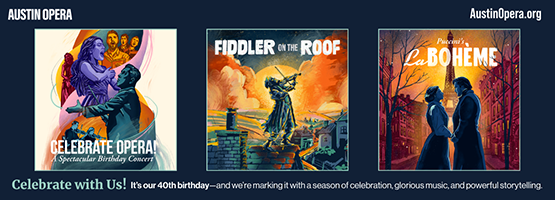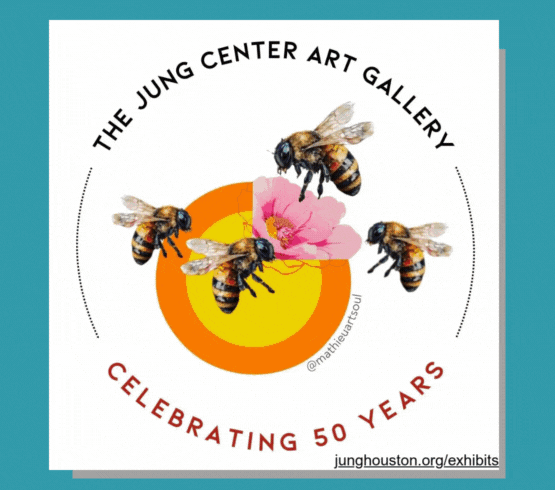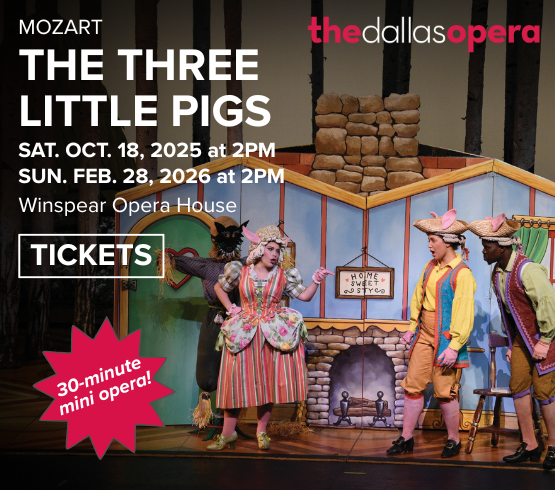Ars Lyrica presented the Houston debut of a rarely heard Handel opera this weekend at Zilkha Hall (May 24-25, 2024), exactly 309 years after its sensational premiere at the King’s Theatre in London in 1715. Handel wrote Amadigi di Gaula, the second of his magic operas, (after Rinaldo) not long after he settled in London. It is a work of youthful exuberance and inventiveness, full of pathos and enchantments, and packed with stunning arias and colorful orchestral writing. Its success cemented Handel’s reputation in the city that would be his home for the rest of his life and career.
The original London production was celebrated for its spectacular stage effects, notably an actual fountain with running water requiring so much machinery that audience members were warned to stay away from the stage for fear of injury. The Ars Lyrica creative team of Tara Faircloth, stage director, Ryan McGettigan, set designer, and Christina Giannelli, lighting designer, found an effective way to dispense magic through moveable hanging screens made of cascading strings, upon which images are projected to set the scene.
The visual effect was sensuous and lavish–lush greenery, a bright moon amidst shimmering stars, a blazing wall of fire, pink peony blossoms representing sweet Oriana, light refracting in the magical waters of the Fountain of True Love. Both the imagery and the repositioning of panels in various formations served the action of the plot and helped create necessary illusions as characters weaved in and out.
Ars Lyrica’s production focused on giving true expression to the complex psychology of the four main characters. Each singer explored a wide range of emotions with great nuance. The action was fast-paced, with fluid delivery of succinct recitatives that carried the drama forward, anchored by one brilliant aria after another, each different in character.
Soprano Raven McMillon, as the sorceress Melissa, immediately elicited the audience’s sympathy with her first solo aria “Ah! Spietato!” She drew inward in her plaintive pleading for love, soaring on the contours of each phrase with ease. Then, in a flash, she delivered fiery coloratura as love turned to hate, displaying both her power and vulnerability.

1 ⁄5
Nola Richardson (Oriana) in the Ars Lyrica Houston production of Handel’s Amadigi. Photo by Lynn Lane.

2 ⁄5
Raven McMillon (Melissa) and Randall Scotting (Amadigi) in the Ars Lyrica Houston production of Handel’s Amadigi. Photo by Lynn Lane.

3 ⁄5
Nola Richardson (Oriana) with Michael Skarke, Sarah Dyer, Christine Boddicker, and Joeavian Rivera in the Ars Lyrica Houston production of Handel’s Amadigi. Photo by Lynn Lane.

4 ⁄5
Nola Richardson (Oriana), and Randall Scotting (Amadigi) in the Ars Lyrica Houston production of Handel’s Amadigi. Photo by Lynn Lane.

5 ⁄5
Randall Scotting (Amadigi), Nicholas Garza (Dardano), Raven McMillon (Melissa), and Nola Richardson (Oriana) in the Ars Lyrica Houston production of Handel’s Amadigi. Photo by Lynn Lane.
Two of the most powerful numbers of the night were Amadigi’s duets, first with Melissa, then later with Oriana. Scotting and Mcmillon let fireworks fly as they challenged each other in “Crudel, tu non farai,” matching intensity and expression in blazing coloratura passages, the sorceress threatening to punish him and the hero showing no fear. Later, pleading for Melissa’s pity and for each other’s life in the duet “Cangia al fine,” Scotting and Nola Richardson (Oriana) echoed each other’s heartrending appeal in tandem, each voice infused by turns with urgency, sincerity, and sorrow.
Soprano Nola Richardson was radiant as Oriana. It would have been easy to portray her simply as a helpless damsel in distress, but Richardson’s Oriana is empowered by an inner strength even more heroic than Amadigi’s. She was the most convincing actor of the night, her every expression true to character. Her voice was pure sensuous delight when relishing in the innocent happiness of “Gioje, venite in sen.” Her tender and poignant “Dolce vita” tugged at heartstrings as she wept over Amadigi’s inert body. Moments later, her anger was palpable in a quarrel with her beloved. But she saved the most powerful expression for her defiant aria “Affanami, tormentami,” in which she stands up to Melissa’s brutality with admirable courage. Richardson’s voice here is resolute and triumphant, with depth and clarity, powerful yet supple.
The orchestra, conducted by Ars Lyrica Artistic Director Matthew Dirst, gave Handel’s ravishing score a superb reading. The ensemble was alert to the turbulent mood swings voiced by each singer, responding to changing emotions with great sensitivity. Especially notable was Kathryn Montoya’s expressive playing on the oboe, both in Dardano’s lament and in striking effect with the trumpet obbligato in Melissa’s rage aria.
Handel’s music for Amadigi di Gaula is extraordinary, the range of vocal and orchestral colors, the variety of inventive musical ideas, all serve to portray the emotional depth of his characters and the very human drama in which they are engaged. Ars Lyrica has brought a 300-year-old masterpiece into the present, with a production that speaks to the heart.
-SHERRY CHENG





